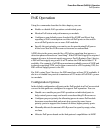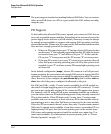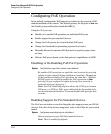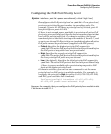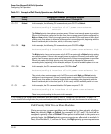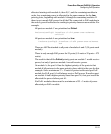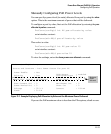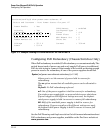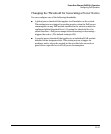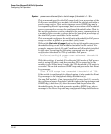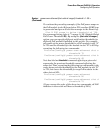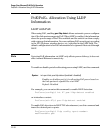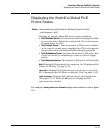
Power Over Ethernet (PoE/PoE+) Operation
Configuring PoE Operation
Controlling PoE Allocation
The default option for PoE allocation is usage, which is what a PD attached
to the port is allocated. You can override this value by specifying the amount
of power allocated to a port by using the class or value options.
Syntax:
[no] int <port-list> poe-allocate-by [usage | class | value]
Allows you to manually allocate the amount of PoE power for
a port by either its class or a defined value.
usage: The automatic allocation by a PD
class: Uses the power ramp-up signature of the PD to identify
which power class the device will be in. Classes and their
ranges are shown in table 11-2.
value: A user-defined level of PoE power allocated for that port.
Note The allowable PD requirements are lower than those specified for PSEs to
allow for power losses along the Cat-5 cable.
Table 11-2. Power Classes and Their Values
Power Class Value
0 Depends on cable type and PoE architecture. Maximum
power level output of 15.4 watts at the PSE.
This is the default class; if there isn’t enough information
about the load for a specific classification, the PSE
classifies the load as class 0 (zero).
1 Requires at least 4 watts at the PSE.
2 Requires at least 7 watts at the PSE.
3 15.4 watts
4 For PoE+
Maximum power level output of 30 watts at the PSE.
For example, to allocate by class for ports 6 - 8:
ProCurve(config)# int 6-8 PoE-allocate-by class
11-12




